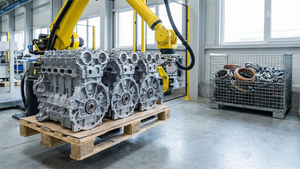
Aerospace and defense company AerSale (NASDAQ: ASLE) missed Wall Street’s revenue expectations in Q3 CY2024, with sales falling 10.6% year on year to $82.68 million. Its non-GAAP profit of $0.04 per share was also 25% below analysts’ consensus estimates.
Is now the time to buy AerSale? Find out by accessing our full research report, it’s free.
AerSale (ASLE) Q3 CY2024 Highlights:
- Revenue: $82.68 million vs analyst estimates of $93 million (11.1% miss)
- Adjusted EPS: $0.04 vs analyst expectations of $0.05 ($0.01 miss)
- EBITDA: $8.25 million vs analyst estimates of $6.50 million ($1.8 million beat)
- Gross Margin (GAAP): 28.6%, up from 25.4% in the same quarter last year
- Operating Margin: 2.4%, up from -2.1% in the same quarter last year
- EBITDA Margin: 10%, up from 2% in the same quarter last year
- Free Cash Flow was $8.87 million, up from -$41.81 million in the same quarter last year
- Market Capitalization: $317.1 million
Company Overview
Providing a one-stop shop that integrates multiple services and product offerings, AerSale (NASDAQ: ASLE) delivers full-service support to mid-life commercial aircraft.
Aerospace
Aerospace companies often possess technical expertise and have made significant capital investments to produce complex products. It is an industry where innovation is important, and lately, emissions and automation are in focus, so companies that boast advances in these areas can take market share. On the other hand, demand for aerospace products can ebb and flow with economic cycles and geopolitical tensions, which can be particularly painful for companies with high fixed costs.
Sales Growth
A company’s long-term performance is an indicator of its overall business quality. While any business can experience short-term success, top-performing ones enjoy sustained growth for multiple years. Over the last four years, AerSale grew its sales at a tepid 5.3% compounded annual growth rate. This shows it failed to expand in any major way, a rough starting point for our analysis.
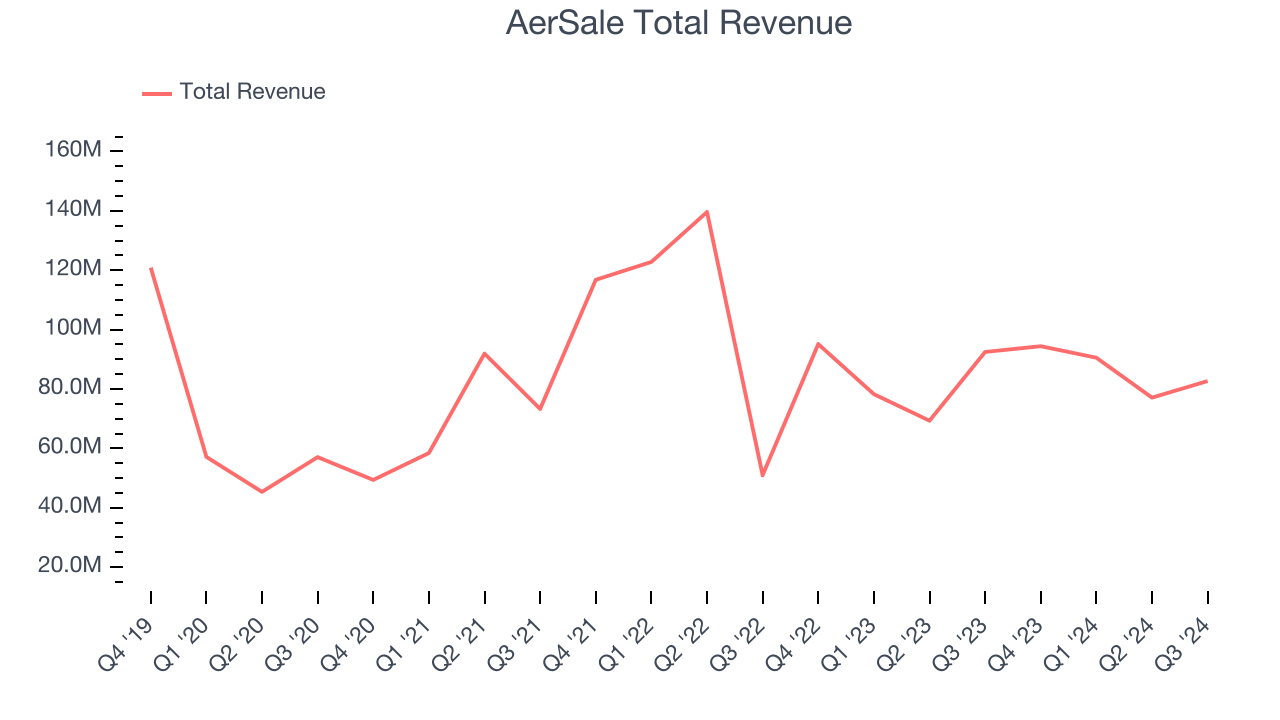
Long-term growth is the most important, but within industrials, a stretched historical view may miss new industry trends or demand cycles. AerSale’s history shows it grew in the past but relinquished its gains over the last two years, as its revenue fell by 10.5% annually. 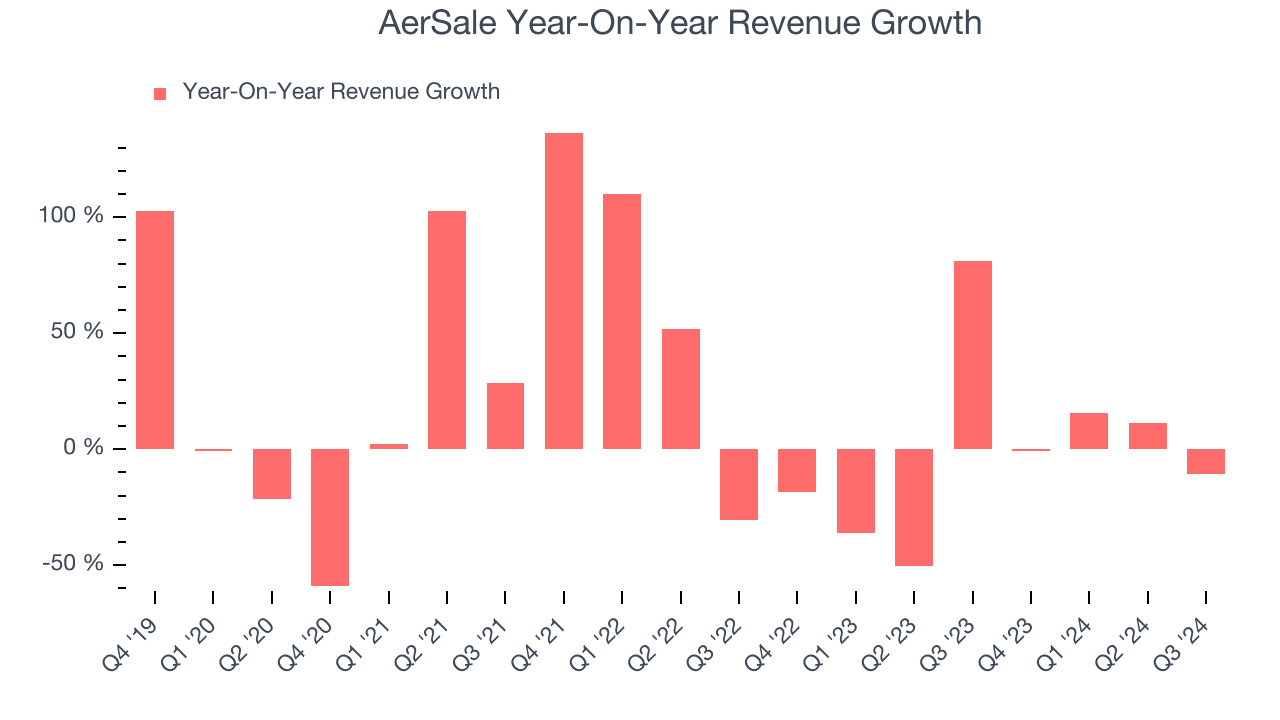
This quarter, AerSale missed Wall Street’s estimates and reported a rather uninspiring 10.6% year-on-year revenue decline, generating $82.68 million of revenue.
Looking ahead, sell-side analysts expect revenue to grow 13.7% over the next 12 months, an improvement versus the last two years. This projection is noteworthy and illustrates the market believes its newer products and services will fuel higher growth rates.
Here at StockStory, we certainly understand the potential of thematic investing. Diverse winners from Microsoft (MSFT) to Alphabet (GOOG), Coca-Cola (KO) to Monster Beverage (MNST) could all have been identified as promising growth stories with a megatrend driving the growth. So, in that spirit, we’ve identified a relatively under-the-radar profitable growth stock benefitting from the rise of AI, available to you FREE via this link.
Operating Margin
Operating margin is one of the best measures of profitability because it tells us how much money a company takes home after procuring and manufacturing its products, marketing and selling them, and, most importantly, keeping them relevant through research and development.
AerSale was profitable over the last five years but held back by its large cost base. Its average operating margin of 7.9% was weak for an industrials business.
Analyzing the trend in its profitability, AerSale’s annual operating margin decreased by 8.1 percentage points over the last five years. The company’s performance was poor no matter how you look at it. It shows operating expenses were rising and it couldn’t pass those costs onto its customers.
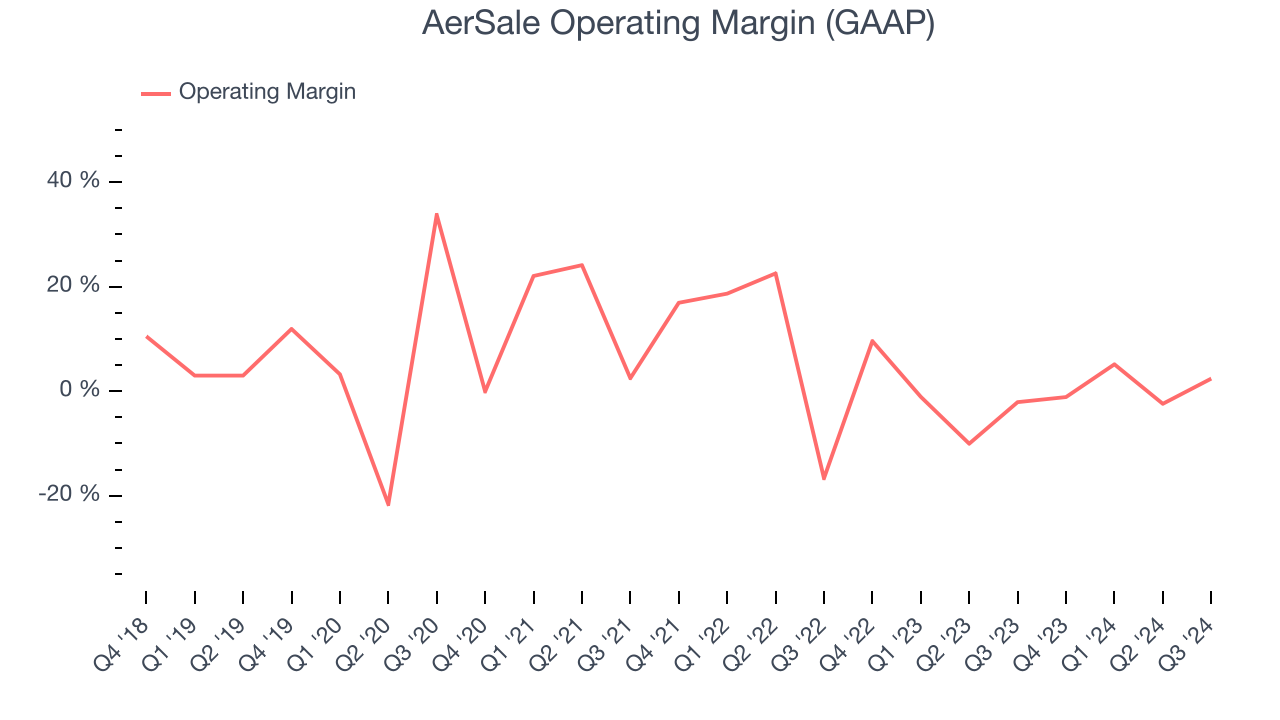
In Q3, AerSale generated an operating profit margin of 2.4%, up 4.5 percentage points year on year. This increase was a welcome development, especially since its revenue fell, showing it was recently more efficient because it scaled down its expenses.
Earnings Per Share
We track the long-term change in earnings per share (EPS) for the same reason as long-term revenue growth. Compared to revenue, however, EPS highlights whether a company’s growth was profitable.
Sadly for AerSale, its EPS declined by 23% annually over the last four years while its revenue grew by 5.3%. This tells us the company became less profitable on a per-share basis as it expanded.
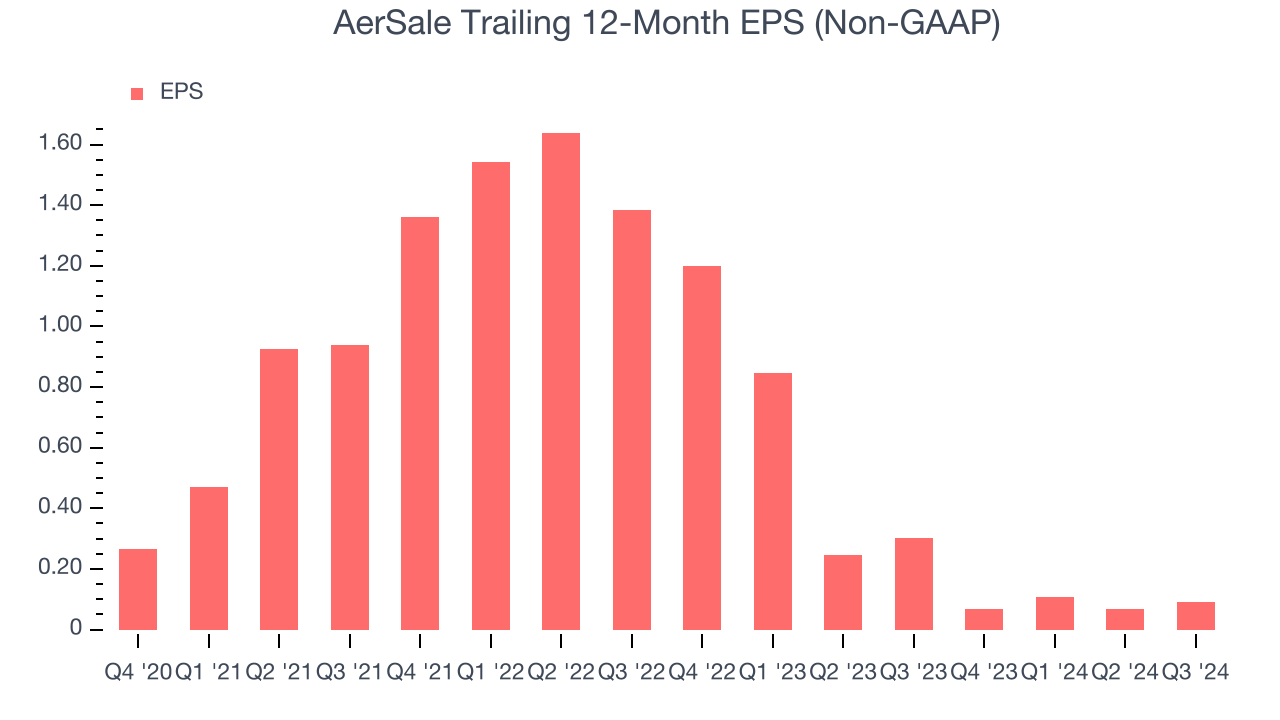
Like with revenue, we analyze EPS over a shorter period to see if we are missing a change in the business.
For AerSale, its two-year annual EPS declines of 74.2% show it’s continued to underperform. These results were bad no matter how you slice the data.In Q3, AerSale reported EPS at $0.04, up from $0.02 in the same quarter last year. Despite growing year on year, this print missed analysts’ estimates. Over the next 12 months, Wall Street expects AerSale’s full-year EPS of $0.09 to grow by 457%.
Key Takeaways from AerSale’s Q3 Results
We were impressed by how significantly AerSale blew past analysts’ EBITDA expectations this quarter. On the other hand, its revenue missed and its EPS fell short of Wall Street’s estimates. Overall, this quarter could have been better. The stock traded down 6.8% to $5.50 immediately following the results.
AerSale underperformed this quarter, but does that create an opportunity to invest right now? We think that the latest quarter is only one piece of the longer-term business quality puzzle. Quality, when combined with valuation, can help determine if the stock is a buy. We cover that in our actionable full research report which you can read here, it’s free.




